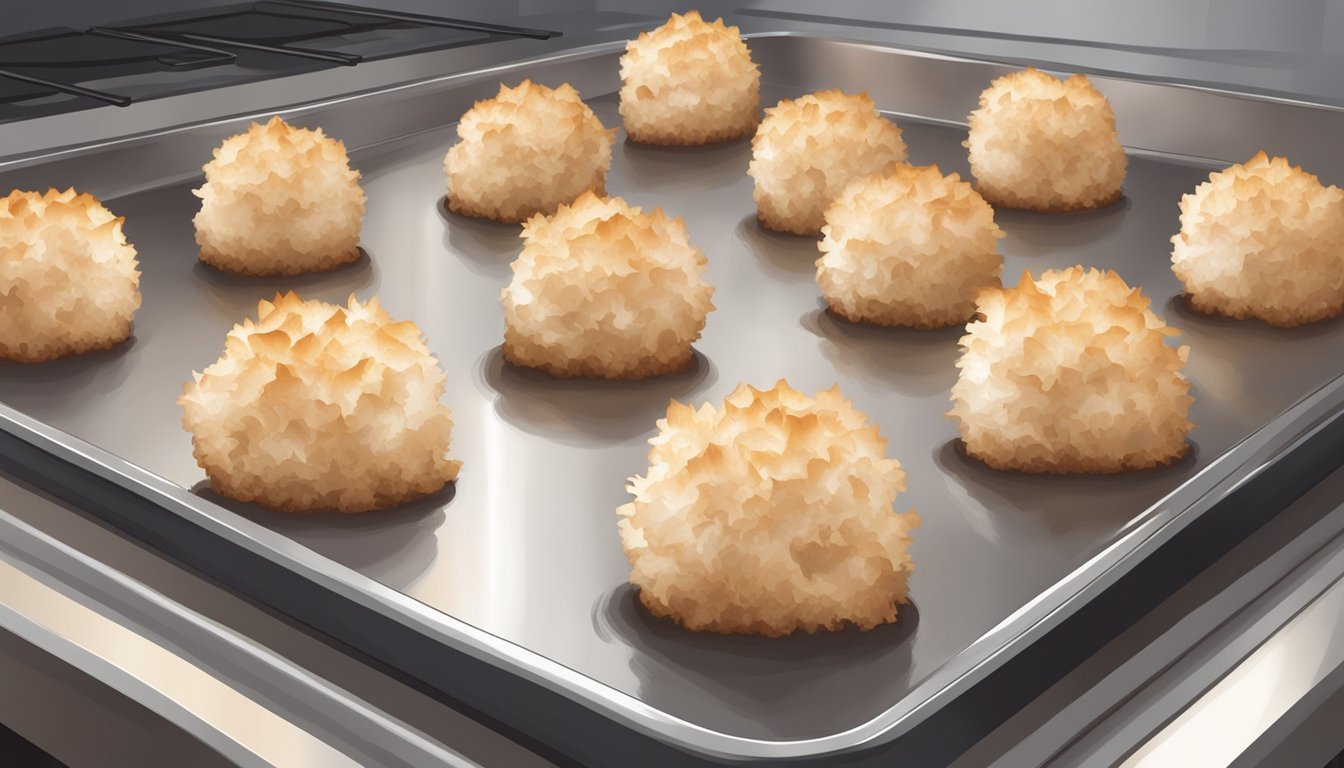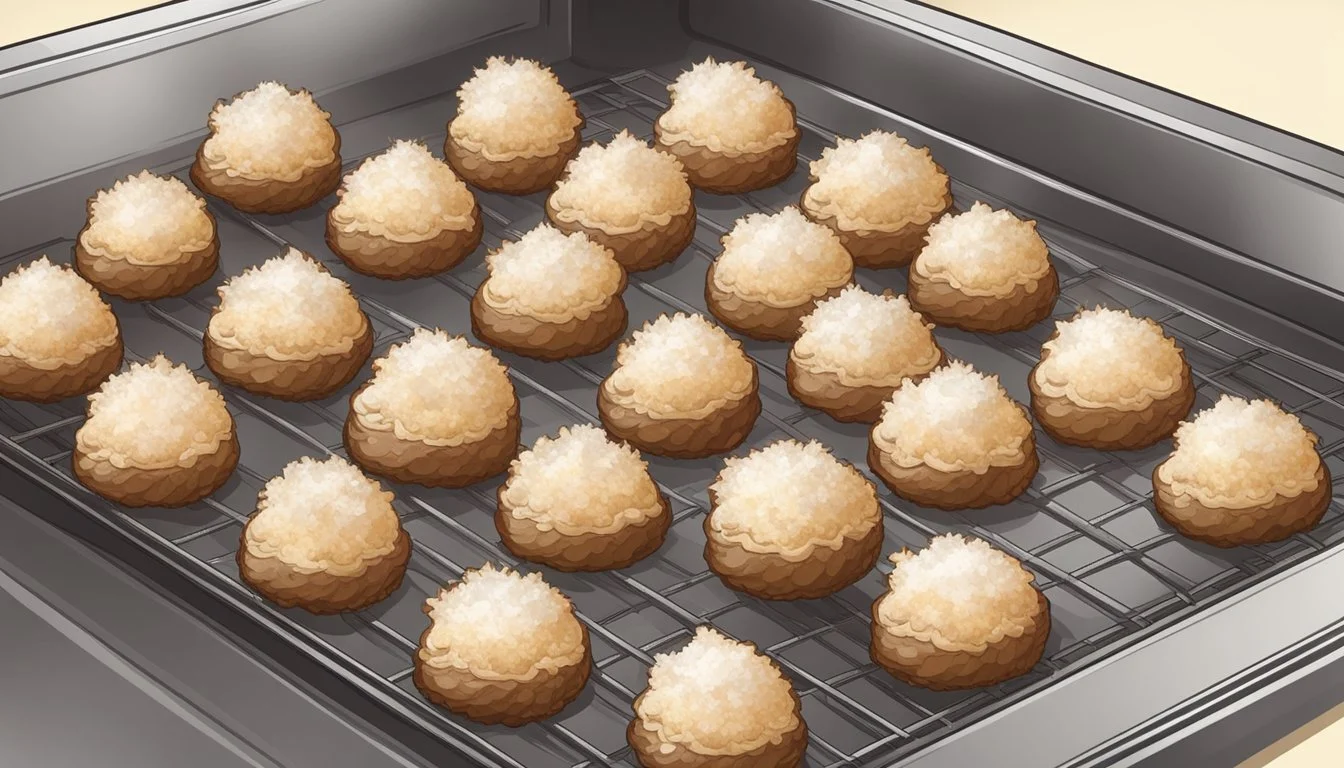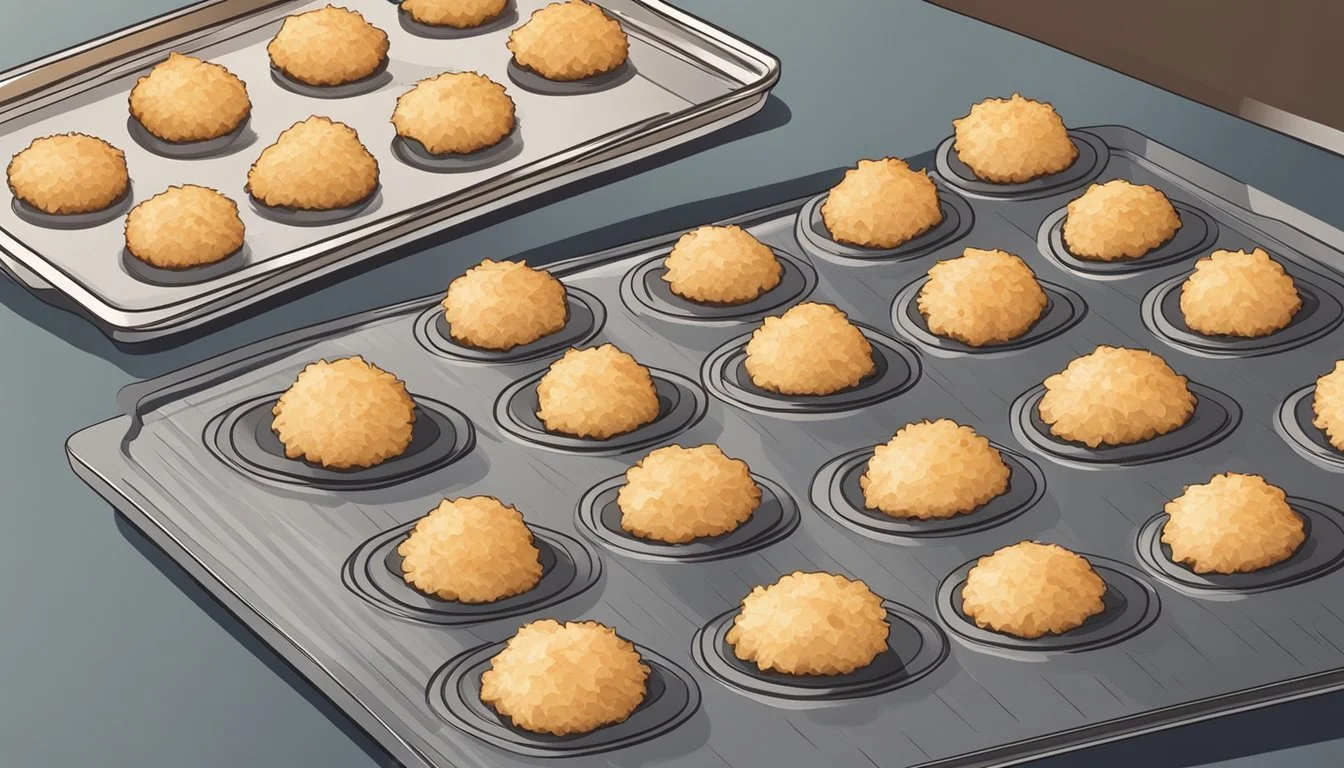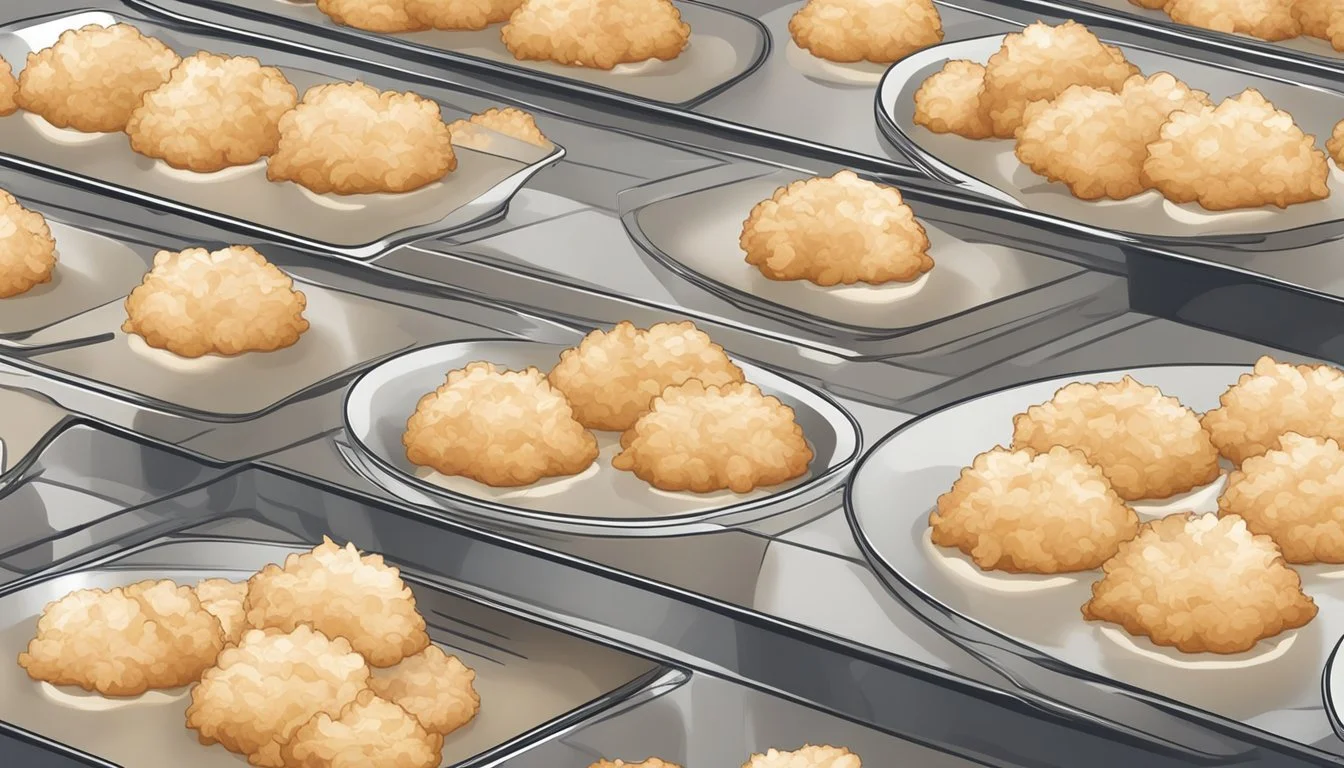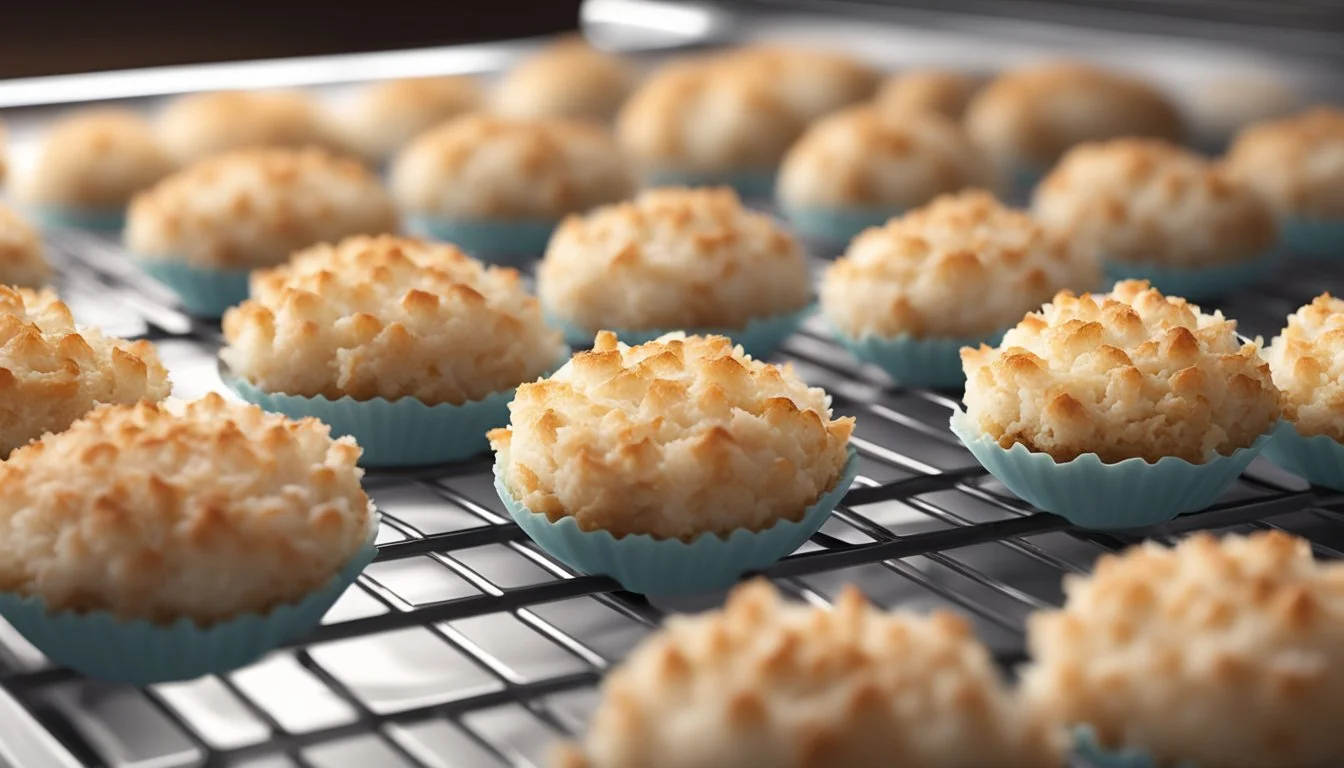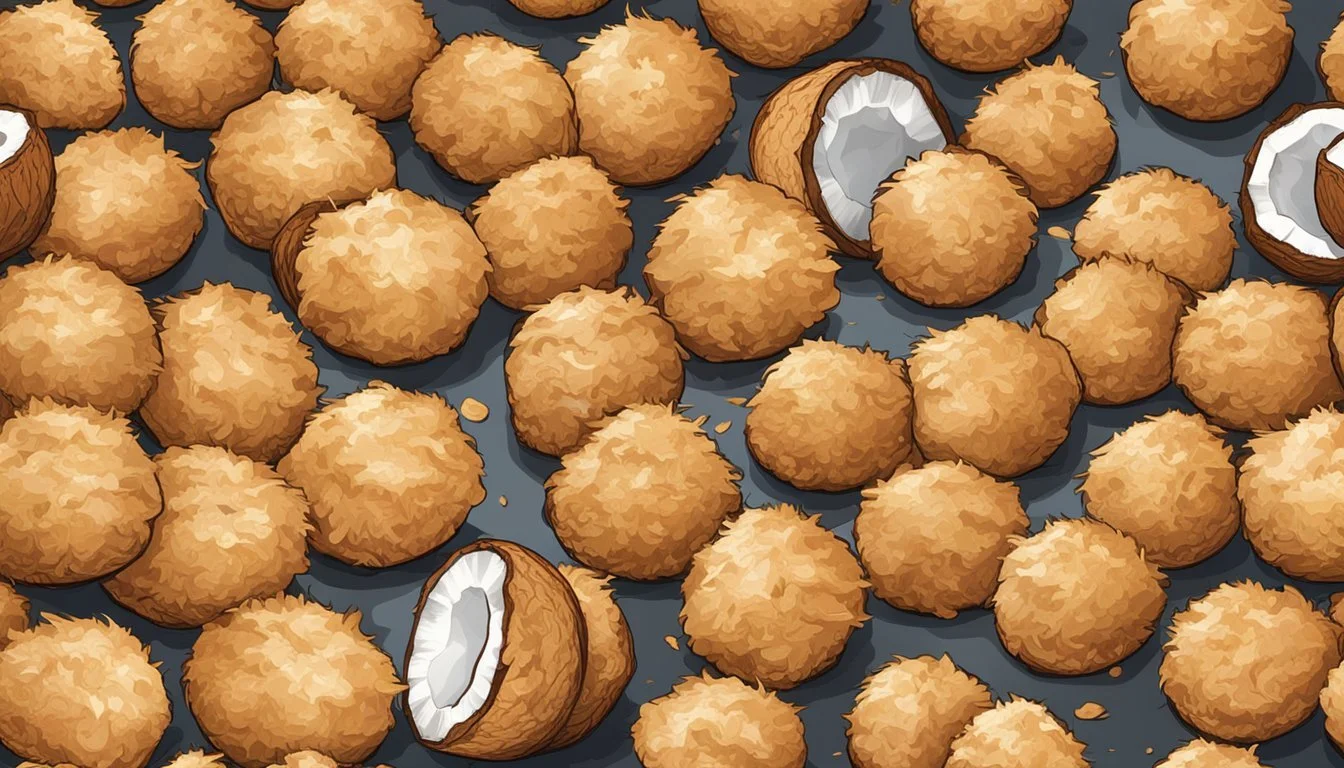Best Way to Reheat Coconut Macaroons
Ensuring Optimal Chewiness and Flavor Preservation
Coconut macaroons are treasured for their delightful chewiness and rich coconut flavor, traits that make them a perennial favorite in the realm of confections. Preserving these qualities during reheating is essential for enjoying them as if they were fresh from the oven. The process of reheating, when executed correctly, ensures these bite-sized treats retain their moist interior and lightly toasted exterior, maintaining the sensory experience that characterizes a perfectly crafted macaroon.
Understanding the characteristics of coconut macaroons lays the groundwork for successful reheating. Composed mainly of shredded coconut bound with egg whites and sweeteners, macaroons are inherently delicate. The interplay between their simple ingredients results in a texture that can easily be compromised if exposed to excessive heat or moisture. Reheating them demands a gentle approach to revive the desired chewiness without drying them out or allowing them to become too soggy.
Careful consideration of reheating methods can mean the difference between enhancing and diminishing the coconut macaroons’ appeal. It requires a balance of time, temperature, and technique to awaken their innate flavors while safeguarding their delectable texture. Enthusiasts agree that the aim is to reach a state where the macaroons are warm enough to unleash their aroma and taste but not so hot as to alter their structural integrity. With the right approach, one can ensure that the coconut macaroons offer a satisfying taste experience with every reheated morsel.
Understanding Coconut Macaroons
Coconut macaroons are a beloved confection known for their sweet flavor and chewy texture. These treats consist primarily of coconut, and there are two common types: one uses sweetened coconut, while the other opts for unsweetened coconut. The former provides an extra sugary taste, while the latter allows for more flexibility in controlling the overall sweetness of the macaroon.
Key Ingredients:
Shredded coconut: The star of the show, providing the iconic texture and tropical flavor.
Sugar: Often granulated, it sweetens the macaroons and helps them brown during baking.
Egg whites: They bind the ingredients and give macaroons a light, airy texture.
Vanilla extract: Adds a warm, aromatic flavor that complements the coconut.
Occasionally, condensed milk is used for moisture and sweetness.
A pinch of salt enhances flavor and balances sweetness.
Almond flour can be added to some recipes to provide structure without gluten.
The process involves whipping egg whites to incorporate air before folding them with the other ingredients. A balance between ingredients is crucial; too much moisture and the macaroons become dense, while too little can make them overly delicate and crumbly.
Variations:
Addition of almond essence or extract for a nutty flavor.
A mix of sweetened and unsweetened coconut grants control over the final taste.
Inclusion of flour can alter the texture, though traditionally, macaroons are flourless.
Coconut macaroons can range from being quite simple, with few ingredients, to more complex with additional flavors and textures. They are often baked until golden, resulting in a delicately crisp exterior that yields to a soft, chewy interior. A properly made macaroon showcases a balance of sweetness and the hearty flavor of coconut, making each bite a delightful experience.
Optimal Storage Techniques
Proper storage is crucial for maintaining the chewiness and coconut flavor of macaroons. It also extends their shelf life and prevents mold growth.
Counter Storage
Coconut macaroons can be stored at room temperature on the counter when they are intended to be consumed within a few days. They should be kept in an airtight container to retain freshness and prevent them from drying out. It's important to ensure that the container is sealed properly to block any moisture, which could lead to spoilage.
Refrigerating Macaroons
For those who plan to enjoy their macaroons over a longer period, refrigeration can be effective. Macaroons can be kept in the refrigerator for up to two weeks without losing much of their texture and taste. An airtight container or a container wrapped in plastic wrap is necessary to keep them from absorbing other flavors and moisture from the refrigerator. This also mitigates the risk of mold growth due to the moist environment inside the fridge.
Freezing for Longevity
Macaroons freeze exceptionally well, thus freezing is the best option for long-term storage beyond two weeks. To freeze, first allow the macaroons to cool completely, and then place them into freezer bags or an airtight container. Removing as much air as possible before sealing the bag prevents freezer burn and preserves the macaroons' quality. They can be stored in the freezer for up to 2-3 months. When one is ready to eat them, simply thaw at room temperature to gradually defrost the macaroons and restore their original texture.
Pre-Reheating Steps
To ensure that coconut macaroons regain their ideal texture and flavor when reheated, a proper setup is essential. The following steps should be taken to set the stage for optimal reheating.
Bringing Macaroons to Room Temperature
Prior to reheating, it is critical that the macaroons are brought to room temperature. Removing them from their storage container and allowing them to sit out will ensure they heat evenly, preventing a tough or overly chewy texture.
Prepping the Oven and Baking Sheet
While the macaroons are coming to temperature, one should preheat the oven. The recommended temperature for reheating is 300°F (150°C), which is sufficiently gentle to warm the macaroons without browning them further. Simultaneously, one should prepare a baking sheet by lining it with parchment paper or a silicone baking mat. These surfaces help to prevent sticking and ensure even heat distribution during the reheating process.
Reheating Methods to Preserve Quality
Proper reheating techniques can ensure that coconut macaroons retain their moist and tender interior, as well as their toasty exterior. By carefully controlling heat and baking time, one can restore the sweet treat's originally intended texture and taste without drying it out.
Oven-Based Reheating
Using the oven to reheat coconut macaroons is ideal for ensuring even warmth and maintaining freshness. To do this:
Preheat the oven to 300°F (149°C).
Place the macaroons on a baking sheet lined with parchment paper.
Heat the macaroons for 3-5 minutes. This short baking time helps to revive the toasty exterior without compromising the soft inside.
Note: The goal is to warm the macaroons without toasting them further.
Alternative Reheating Techniques
Though the oven is typically recommended, there are other methods to consider:
Microwave: For a quick method, one can microwave the macaroons on a microwave-safe plate covered with a paper towel at 50% power for about 20-30 seconds. This will help to keep them moist but may not crisp the exterior.
Stove: Heat a dry skillet over low heat. Place the macaroons in the skillet for a couple of minutes, turning them once to achieve a slightly toasted coconut flavor.
Caution: Alternative techniques may result in less control over texture changes, so they should be used with careful attention to ensure the macaroons do not become too dry or too toasty.
Serving Suggestions and Additions
Reheating coconut macaroons properly ensures that they retain their delightful chewiness and rich coconut flavor. Below are suggestions to enhance these cookies when serving them warm.
Suggested Toppings
Chocolate (What wine goes well with chocolate?) Drizzle: A topping of melted chocolate can add a luscious twist to coconut macaroons. For a classic look and taste, they can opt for dark or milk chocolate. For a more decorative touch, white chocolate provides a contrast to the golden brown hue of the cookies.
Table of Suggested Chocolate Toppings
Chocolate Type Suggested Application Dark Chocolate Rich and intense chocolate flavor Milk Chocolate Creamy and sweet with a mild chocolate taste White Chocolate Adds a sweet, creamy accent
Sweetened Coconut: Sprinkling additional sweetened coconut on top of macaroons can intensify the coconut flavor. It's best to toast it slightly for added texture.
Serving the Reheated Macaroons
Pairing: Serve the warm, reheated macaroons with a scoop of ice cream to contrast the textures and temperatures. Vanilla, chocolate, or even coconut-flavored ice cream complements the dessert well.
Form and Function: Before serving, use a cookie scoop or small spatula to neatly form the ice cream and arrange the macaroons on a serving plate. The key is to maintain the aesthetic of the dessert while ensuring the macaroons are the centerpiece.
By focusing on simple, quality additions, one can elevate the humble coconut macaroon to a dessert that is as appealing to the eye as it is to the palate.
Troubleshooting Common Reheating Issues
When reheating coconut macaroons, it is essential to retain the cookie's inherent moistness and chewy texture. Following specific tips can help overcome common reheating challenges.
Preventing Dryness and Hardening
One should be cautious not to overheat coconut macaroons, as this can lead to dryness. To prevent the macaroons from hardening:
Moisture Retention: Wrap the macaroons in a damp paper towel when reheating in a microwave. This introduces moisture and prevents the macaroons from drying out.
Low Heat: Use a low heat setting or a defrost function to gently warm the macaroons, preserving their moistness.
Maintaining Chewy Texture
The chewy texture of a coconut macaroon is its signature quality. To ensure the macaroons maintain this texture:
Oven Method: Reheat macaroons in the oven on a low temperature (around 300°F or 150°C) for a few minutes. This gentle reheating helps maintain the chewiness without over-baking.
Check Frequently: Whether using a microwave or oven, it is crucial to check the macaroons frequently. They are best enjoyed slightly warm, and over-reheating can compromise their chewy quality.
Final Notes on Flavor Enhancement
When reheating coconut macaroons, careful flavor enhancement can elevate the already delightful taste, ensuring the sweet, chewy treats retain their irresistible coconut charm.
Adding Flavors After Reheating
Sweetness: If the macaroons have lost some sweetness during storage, a light drizzle of honey or a sprinkle of powdered sugar after reheating can reinstate that desirable sugary hint.
Flavorings: To bolster the macaroons’ coconut flavor, one might consider gently brushing them with a bit of coconut extract or rum. These flavorings should be applied sparingly to avoid overpowering the delicate balance of the macaroons.
Differences from Other Confections
Identifying the distinct characteristics of coconut macaroons is crucial, especially in comparison with similar sounding confections like French macarons.
Macaroons vs. French Macarons
Coconut macaroons are often confused with French macarons due to their similar names, yet they are distinctly different in ingredients, appearance, texture, and flavor profile.
Ingredients: Macaroons are primarily made from shredded coconut, egg whites, and sugar. In contrast, French macarons are delicate cookies made from almond flour, egg whites, and granulated sugar.
Appearance: Macaroons are typically dome-shaped and have a rugged surface, thanks to the shredded coconut. Macarons are recognized for their smooth, round, and flat-topped shells with a ruffled circumference known as "feet."
Texture: Macaroons have a dense and chewy texture, while macarons are known for their crisp exterior and slightly chewy interior.
Baking: The baking process differs as well. Macaroons require a straightforward baking approach, often needing no resting time before going into the oven. Macarons, on the other hand, demand a meticulous technique, including tapping the baking sheet to remove air bubbles and allowing the piped batter to rest until a skin forms before baking.
Flavors: While macaroons embrace the rich, tropical taste of coconut, often enhanced with vanilla or chocolate, French macarons come in a myriad of flavors ranging from fruity to nutty, often filled with ganache, buttercream, or jam.
The quality of both confections is deeply rooted in their preparation methods; the slightest deviation can alter the outcome. Each requires different skills and techniques to maintain their unique properties, making them special in their own right.
Health and Safety Considerations
When reheating coconut macaroons, one should consider potential allergens and the proper methods for handling leftovers to ensure food safety while maintaining the quality of the macaroons.
Allergen Information
Coconut macaroons typically contain eggs, which are a common allergen. Individuals with egg allergies should avoid consuming macaroons unless they are certain of an egg-free recipe. Additionally, even though coconut macaroons are not always made with nuts, they may be produced in facilities that handle nuts, creating a risk for those with nut allergies, including almond. It is crucial to check packaging or inquire with the baker about possible cross-contamination if allergies are a concern.
Handling Leftovers Safely
For the safe storing of coconut macaroons after reheating, make sure they cool down completely to prevent condensation, which can lead to microbial growth. They should then be stored in an airtight container to maintain freshness and prevent exposure to bacteria. To minimize the risk of foodborne illness, one should consume the reheated macaroons within two days. In the context of potential contamination, be aware that utensils or surfaces used should be cleaned thoroughly to avoid the spread of bacteria.
Additional Baking Tips and Variations
Exploring variations in a macaroon recipe or perfecting the technique with the right baking tools can significantly enhance the texture and flavor of these delightful treats.
Macaroon Recipe Variations
For gluten-free variations, swapping the regular flour with a gluten-free alternative allows those with dietary restrictions to enjoy macaroons. Adding chocolate chips and chopped pecans transforms the traditional coconut macaroon into an Almond Joy-inspired dessert, minus the almonds. During Passover, macaroons are a popular treat, and one can ensure they adhere to dietary rules by using Kosher for Passover ingredients and eliminating leavening agents.
Chocolate Chip Pecan: Incorporate 1/2 cup mini chocolate chips and 1/2 cup diced pecans into the traditional recipe.
Fruit Variations: Mix in dried fruit such as cranberries or cherries to add a tart contrast to the sweetness.
Baking Tools and Techniques
Utilizing a mixer with a whisk attachment facilitates a quick and even mix of egg whites and sugar, ensuring that the sugar dissolves adequately without over-beating the mixture. The use of a double boiler can be crucial when combining ingredients that require gentle heating. Additionally, allowing macaroons to cool on a wire rack prevents the bottoms from getting soggy, retaining their signature chewiness.
Mixer Technique: Beat egg whites, sugar, and extracts on medium-high speed until foamy.
Baking Tip: Always line the baking sheet with parchment paper to prevent sticking and achieve a uniform bake.
Exploring the Love for Coconut Macaroons
Coconut macaroons hold a special place in the world of sweets, charming coconut lovers with their delightful combination of textures and flavors. Each bite into a macaroon leads to a pleasant contrast between a crisp exterior and a chewy interior, making them a favorite for many.
Flavor Profile: A prominent coconut flavor, naturally sweet and subtly tropical, is the essence of a coconut macaroon. Homemade varieties often carry a richness that pre-packaged counterparts strive to emulate. The addition of chocolate—either as a dip or a drizzle—complements the sweetness of the coconut, adding a luxurious and decadent dimension.
Chewiness: The key characteristic that aficionados appreciate is the chewy consistency, which retains moisture and keeps the macaroons delectably tender.
Coconut Purity: Authentic coconut macaroons are celebrated for their simple, yet robust coconut taste, often using minimal ingredients to let the coconut shine.
The preference for coconut macaroons can also be attributed to their versatility. They can be enjoyed plain, which allows the coconut itself to be the star, or be enhanced with additional flavors or toppings, such as:
Additions Effect on Flavor Chocolate Adds a rich, creamy texture and a hit of sweetness Nuts Introduces a crunchy texture and earthy notes
In essence, the love for coconut macaroons stems from their delicious simplicity and the satisfying sensory experience they provide. They are a testament to how a handful of ingredients, when combined skillfully, can create a treat that resonates with a diversity of palates.
Conclusion
Reheating coconut macaroons properly ensures they retain their distinct chewiness and rich coconut flavor. Gentle reheating is key. Microwaving can be convenient, using short intervals at medium power, but one must be vigilant to prevent overcooking. Alternatively, reheating them in an oven or toaster oven at 300°F for just a few minutes allows for even warming throughout.
One should allow macaroons to reach room temperature before serving to fully enjoy their texture and taste. If they have been stored in the freezer, thawing them at room temperature before reheating yields the best results. Macaroons' freshness and flavor can be preserved by keeping them in an airtight container, away from moisture and strong odors, until ready to reheat.
Here's a concise guide:
Microwave: Use medium power, 10-20 second bursts.
Oven/Toaster Oven: Preheat to 300°F, heat for a few minutes.
Storage: Airtight container, room temperature.
Thawing: If frozen, thaw at room temperature first.
In conclusion, the objective is to achieve warmth without compromising the macaroon's moisture or structure. The methods mentioned are effective and easy, making the enjoyment of leftover coconut macaroons a simple pleasure.

